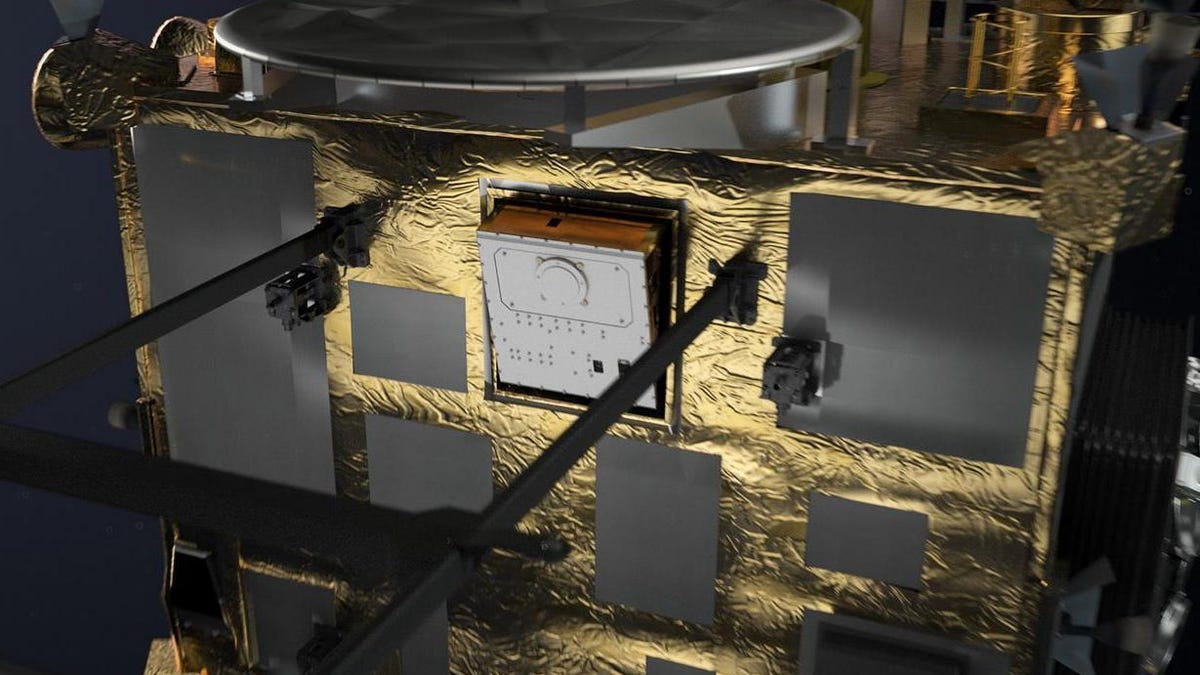Asteroid lander snaps pic of its shadow as it touches down
Hayabusa 2's Mascot lander has taken the plunge to asteroid Ryugu, a "land full of wonder, mystery and danger."
Japan's Hayabusa 2 spacecraft is now three for three on successfully sending machines to the surface of asteroid Ryugu.
The Mobile Asteroid Surface Scout (Mascot) made a successful descent, landing on the asteroid around 10:30 p.m. PT Tuesday. It's now studying the rocky space object up close.
The Mascot lander team is active on Twitter, where it described Ryugu as a "land full of wonder, mystery and danger."
As with the two tiny Minerva rovers that Hayabusa 2 sent down to the asteroid in September, Mascot was able to spot its own shadow on Ryugu's surface as it approached its landing site. The team tweeted a photo of the shadow.
Hello #Earth, hello @haya2kun! I promised to send you some pictures of #Ryugu so here’s a shot I took during my descent. Can you spot my shadow? #AsteroidLanding pic.twitter.com/dmcilFl5ms
— MASCOT Lander (@MASCOT2018) October 3, 2018
The lander, which is about the size of a toaster oven, had to use a built-in swing-arm to turn itself upright after landing.
"Wow! Ryugu is so dark that I had trouble orienting myself. I had to use my swing arm to relocate so I could continue collecting scientific data... Much better now!" the Mascot team tweeted.
Wow! Ryugu is so dark that I had trouble orienting myself. I had to use my swing arm to relocate so I could continue collecting scientific data... Much better now! #AsteroidLanding
— MASCOT Lander (@MASCOT2018) October 3, 2018
Mascot comes from the German Aerospace Center (DLR) and French space agency CNES. It should be able to operate for about 16 hours on battery power to study Ryugu's surface, temperature and magnetic field.
Once Mascot completes its initial data collection, it will be directed to make one hop to reach another location on the asteroid in order to take more measurements.
The Hayabusa 2 mission is aimed at learning more about the history and origin of our solar system through studying the asteroid. JAXA, Japan's space agency, plans to gather a sample from the asteroid and bring it back to Earth around late 2020.


